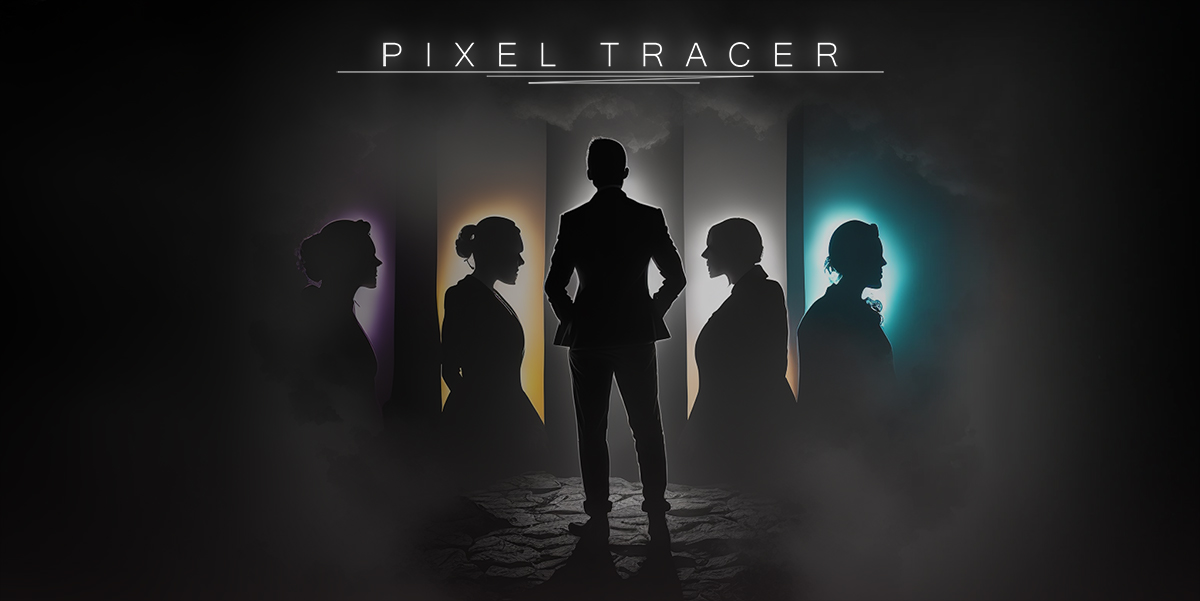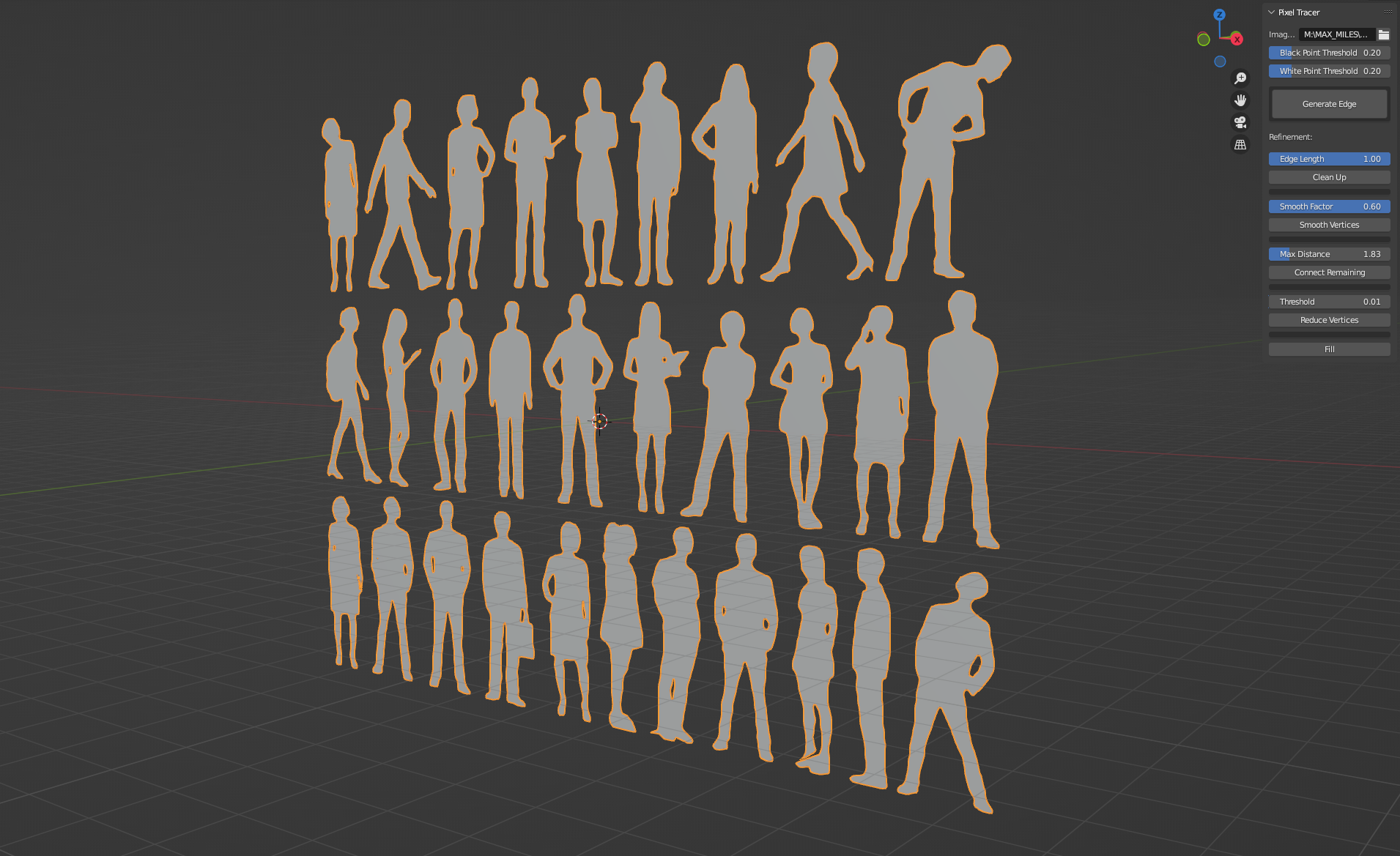Pixel Tracer - From 2D To 3D
Pixel Tracer now has a 4.2 update!
As a Houdini user who nowadays work mainly in Blender I miss having the trace node around. So I created Pixel Tracer. Using a brute force method the addon takes a closer look at the pixel values of your input image and creates edges based on it with correct aspect ratio. It may not be the fastest, but it's faster than manual work with the knife tool. And it's definitely one of the more accurate out there. Whether you're a seasoned Blender user or just starting out, this addon is fun to play around with and the possibilities are endless.
Pixels to edges

Your client Bruce Wayne might ask for a 3D logo and is only providing a rasterized image. Whether it's a JPG, TIF, or PNG you can skip the extra step of vectorizing it and go straight to 3D.
Tweak the input values with the black- and white point sliders to get it just right. The values determine what is considered black and white in the input image.
Quick Tip: Working with large images? Save time by generating on a small part of the image to get the black- and white point values right before applying it to the entire image.
When you're happy you can try out the refinement section which is designed to be used from the top to bottom, taking each step at your own pace until you achieve the desired result.
Clean up

Remove clutter and unwanted edges, fast! This step isn't just deleting edges willy-nilly. It's actually quite smart. It calculates the average length of all the edges and then gets rid of the ones that differ too much. It's like the plugin's version of Marie Kondo-ing your edges.
Smooth

Jagged edges are about as cool as a floppy disk in the year 2023. And pixels tend to produce a ton of them. But no need to fret. Eliminate jagged edges and achieve a smoother, more refined look with the smoothing function.
Connect potential gaps

After the clean up you might be left with some gaps. This step scans for lone vertices that are only connected to one edge and connects them to the closest edge, creating a closed loop necessary for building faces in the final step.
Create faces

After clicking the 'Fill' button, your edges will be triangulated to form a solid mesh. While this works great for many situations, for the ultimate refinement, I'd recommend using Blender's own remesh tool or taking it to the next level with Exoside's QuadRemesher. With your logo now fully realized, your client can now fight crime knowing their brand is in good hands.
A quick disclaimer!
Alpha channels is not processed by the code at the moment. Only black on white or white on black images work for the time being. Please keep in mind that the quality and processing time of Pixel Tracer's output is influenced by the complexity and resolution of the input image. Higher complexity and resolution images takes longer to process. While I strive for the highest possible accuracy, I'd instead recommend using vectorized images for projects that require 100% precision.
That being said, Pixel Tracer is an alternative option that saves you the hassle of manual cutting or if you don't have access to vector formats. While it may not be as powerful as Houdini's trace node, Pixel Tracer has saved me countless hours and could be a useful addition to your workflow. I'm happy to answer any questions you may have!
Discover more products like this
2d import-image pixel tracer pixeltracer trace pixel tracing outline silhouette image tracer




